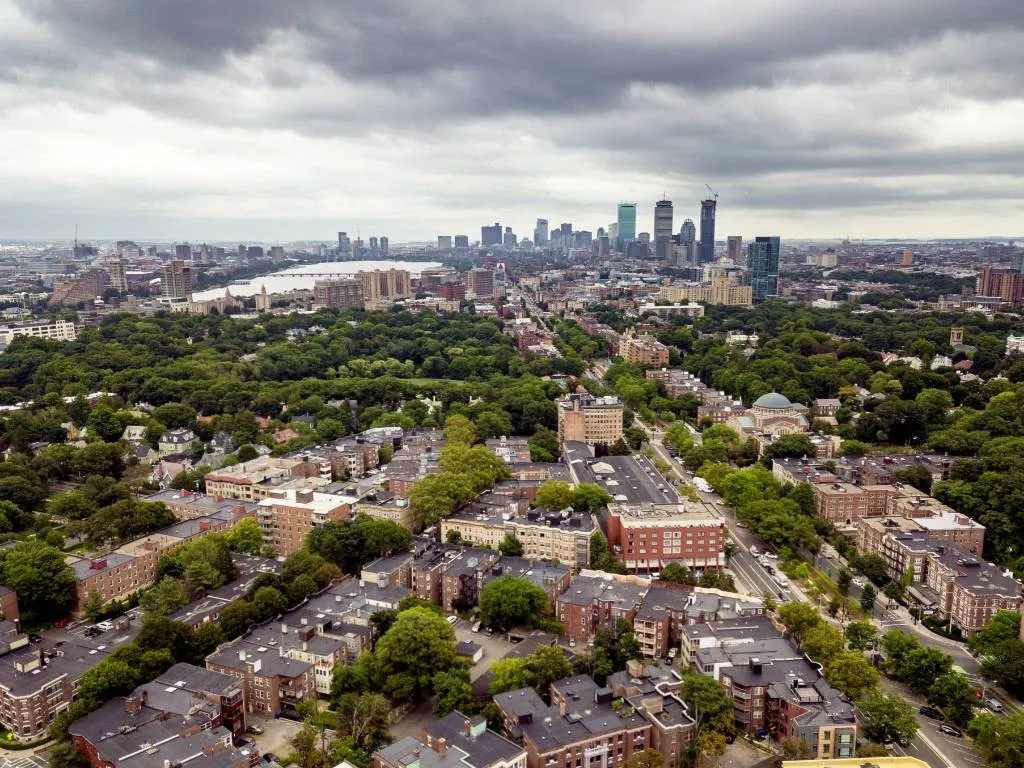Brookline, MA
With a single, trusted source of truth, Brookline built a comprehensive paving and sidewalk plan in less time and set clear expectations with residents about what gets fixed, where, and when.

Brookline, MA Infrastructure Assessment
Summary
- Weeks-to-delivery data enabled faster street and sidewalk improvements residents could feel sooner
- 100 roadway miles scanned with defensible condition scores and 13,178 signs inventoried for safer travel
- Brookline moved from reactive decisions to confident, data-driven plans that are easy to explain to taxpayers
Problem
Brookline manages a busy, multimodal street network where residents expect quick responses to safety and maintenance needs, yet the town’s data was outdated or inconsistent, making it hard to decide which roads to fix or when. Crews often found themselves reactive to complaints and pressed in town meetings to answer “Why not my road?”, without a clear, defensible prioritization method to point to. Manual field walks and piecemeal spreadsheets were slow, unsafe, and expensive, and by the time reports were compiled, the information was already stale—undermining budget requests and paving plans.
Solution
Brookline chose Cyvl to rapidly survey the full network using vehicle‑mounted LiDAR and multi‑sensor imaging, capturing a complete, high‑resolution record of pavement, sidewalks, and roadside assets. Cyvl’s Infrastructure Intelligence platform applied AI to convert that raw data into street‑by‑street condition scores, prioritized repair lists, and defensible multi‑year plans with clear reports and maps for leadership and residents. Delivered on September 2, 2025, Brookline received detailed, actionable pavement condition data for all 100 roadway miles, a complete inventory of 13,178 signs, and mapping of 2,754 sidewalk assets—ready to use in weeks, not months.
Impact
With a single, trusted source of truth, Brookline built a comprehensive paving and sidewalk plan in less time and set clear expectations with residents about what gets fixed, where, and when. Accurate quantities, condition scores, and mapped locations streamlined budgets and scheduling so crews can act faster and get more work done within the construction season. Public meetings are now supported by transparent maps and metrics, allowing staff to show exactly how decisions maximize safety, equity, and taxpayer value.
- Data delivered by September 2, 2025—weeks instead of months—so projects could move from assessment to field work within the same season
- 100 roadway miles scanned and scored, giving residents confidence that every street was evaluated consistently and fairly
- 13,178 signs inventoried to improve safety compliance, maintenance routing, and visibility at schools, crosswalks, and key corridors
- 2,754 sidewalk assets mapped to guide ADA upgrades and target high‑foot‑traffic repairs where they matter most
- Faster issue resolution as crews use precise, map‑based locations to schedule patching and resurfacing with fewer return trips
- Noticeable reduction in 311 pressure as the town addresses the most critical segments sooner and communicates timelines clearly
- Stronger, easier‑to‑defend budget requests backed by hard numbers and condition data that show efficient use of taxpayer dollars
- Town meetings run smoother with data‑rich visuals that answer “Why not my road?” and demonstrate community‑wide benefits
- Budget allocation, public communication, and work scheduling are now dramatically simpler with great data informing every decision




-%20logo%20(unpadded).png.png)